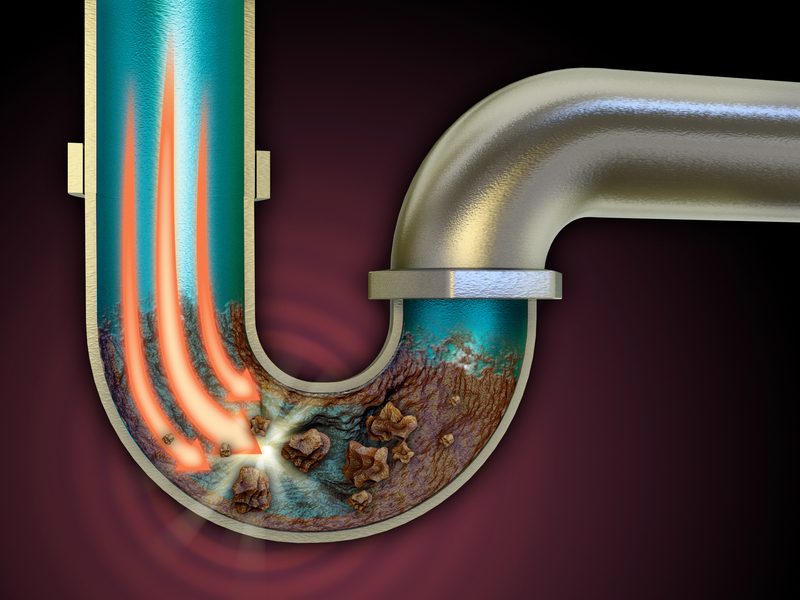Easy and Efficient Ways to Clean Mould from Your Window Sills
Posted on 19/06/2025
Mould growth on window sills is a common issue in many homes, especially in areas with high humidity or poor ventilation. Not only does unsightly mould make your living space look unkempt, but it can also contribute to health problems like allergies and respiratory issues. Fortunately, tackling mould on your window sills doesn't have to be difficult. In this comprehensive guide, you'll discover easy and efficient ways to clean mould from your window sills and prevent it from returning. Whether you're looking for natural solutions or heavy-duty commercial cleaners, this article covers everything you need to know for a cleaner, healthier home.
Understanding Mould: Why Does It Grow On Window Sills?
Mould is a type of fungus that thrives in damp, poorly ventilated environments. Window sills often become breeding grounds for mould due to condensation, humidity, and organic material like dust or pollen. Here are the main reasons mould frequently appears on window sills:
- Poor ventilation: Limited airflow encourages moisture buildup.
- Condensation: Differences in temperature inside and outside the home cause water droplets to form on window surfaces.
- Leaky windows: Faulty seals or damaged frames let rainwater trickle in, further dampening the sill.
- Lack of cleaning: Dirt and dust provide food sources for mould spores.
Understanding why mould grows on your window sills is the first step toward removing and preventing it efficiently.

The Health Risks of Mould on Window Sills
Mould spores can negatively affect indoor air quality. For sensitive groups--like children, the elderly, or anyone with existing respiratory conditions--exposure to mould can lead to:
- Allergic reactions: Sneezing, runny nose, itchy eyes, and skin irritation.
- Asthma attacks: Worsening breathing problems for people with asthma.
- Respiratory infections: Chronic exposure can increase susceptibility to illnesses.
That's why learning how to clean mould from your window sills effectively is essential for a healthier living environment.
How to Prepare for Mould Removal: Essential Safety Tips
Before diving into mould removal, always prioritize safety:
- Wear protective gloves--Nitrile or rubber gloves keep your skin safe from chemicals and spores.
- Use a face mask--An N95 or similar mask prevents you from inhaling mould spores.
- Open the windows--Good ventilation is crucial during cleaning.
- Protect your eyes--Safety goggles add an additional layer of protection, especially if you're using strong cleaning agents.
- Gather supplies--Soft brush, sponges, microfibre cloths, spray bottles, and your chosen cleaning solution.
Now you're ready to tackle the job safely and efficiently!
Quick and Natural Solutions for Cleaning Window Sill Mould
White Vinegar: Nature's Mould Cleaner
White vinegar is a great natural solution for cleaning mould from window sills. Its mild acidity helps kill most types of mould:
- Pour undiluted white vinegar into a spray bottle.
- Spray generously onto the affected areas of the window sill.
- Let it sit for at least one hour.
- Scrub with a soft-bristled brush or sponge.
- Wipe the sill down with a damp, clean cloth.
- Dry thoroughly.
*Tip:* For stubborn patches, repeat the process or let the vinegar soak overnight.
Baking Soda: A Gentle Yet Effective Option
Baking soda not only cleans but also deodorizes the window sill:
- Mix one tablespoon of baking soda into a spray bottle filled with water.
- Shake and spray onto mouldy window sills.
- Scrub gently with a brush.
- Rinse with a damp cloth and let dry.
Baking soda is an excellent choice if you have children or pets who are sensitive to harsh chemicals.
Lemon Juice: Fresh and Antifungal
Lemon juice is naturally acidic and has mild antifungal properties:
- Squeeze fresh lemon juice directly onto the affected area.
- Allow it to work for about five minutes.
- Wipe away with a damp cloth.
Lemon juice leaves behind a fresh scent as well!
Cleaning Mould with Commercial Mould Removers
When to Choose a Specialized Mould Remover
If natural solutions aren't effective or if you're dealing with extensive mould infestations, commercial cleaners are often your best bet. Choose a commercial mould remover if:
- The mould covers a large area.
- The mould is persistent despite several attempts with natural methods.
- You want a fast, one-step solution.
How to Use Commercial Cleaners Safely and Effectively
- Read and follow all label instructions carefully.
- Apply the cleaner with a spray bottle directly to the mouldy window sill surface.
- Allow it to sit for the recommended amount of time (usually 5-15 minutes).
- Scrub with a brush or sponge.
- Wipe down with a damp cloth, then dry thoroughly.
Pro tip: Never combine different cleaning products, as this can produce dangerous fumes.
Best Commercial Mould Cleaners for Window Sills
- Mould & Mildew Sprays like HG Mould Spray and Astonish Mould & Mildew Blaster are highly rated.
- Hydrogen peroxide-based cleaners offer a less toxic but effective solution.
- Bleach solutions: For white, non-porous surfaces only--never for wooden or painted sills.
Step-by-Step Guide: How to Clean Mould from Your Window Sills
1. Remove Loose Debris
Begin by using a dry cloth, vacuum cleaner with a hose attachment, or a soft brush to remove dust, pollen, and any loose spores.
2. Apply Your Chosen Mould Cleaner
- Natural option: Vinegar, baking soda, or lemon juice spray.
- Chemical option: Carefully follow the instructions for your commercial product.
Generously coat the affected area and allow the cleaner to soak in and break down the mould.
3. Scrub the Surface
Use a soft-bristled brush or non-abrasive sponge to scrub away the mould. Avoid harsh abrasives that could damage paint or sealant.
4. Rinse and Wipe Clean
After scrubbing, rinse the sill with a damp, clean cloth. Remove all residues of the cleaning agent. For window frames, pay extra attention to corners and crevices.
5. Dry Thoroughly
Mould loves moisture! Always dry your window sill thoroughly after cleaning using a dry cloth or even a hairdryer on a cool setting. Consider leaving the window open to speed up the process.
6. Check for Damage
If you notice cracking paint, damaged wood, or persistent musty smells, further repairs may be necessary to prevent mould from returning.
Special Considerations for Different Window Sill Materials
- Wooden window sills: Be careful with water and avoid harsh chemicals. After cleaning, consider resealing or repainting to protect the wood from future mould growth.
- uPVC or plastic sills: Most commercial cleaners are safe; just avoid abrasives to prevent scratching.
- Painted or varnished sills: Patch test any cleaner on a small, hidden area first to ensure it won't damage the finish.
How to Prevent Mould from Growing on Window Sills
1. Improve Ventilation
- Open windows regularly, especially after showers or cooking.
- Use extractor fans in kitchens and bathrooms.
- Consider adding trickle vents or air bricks to problem areas.
2. Reduce Indoor Moisture Levels
- Use a dehumidifier in humid rooms.
- Dry washing outside when possible.
- Fix any leaks or damaged window seals promptly.
3. Clean Regularly
- Wipe down your window sills at least once a week.
- Vacuum dust and organic debris that can fuel mould growth.
4. Use Mould-Resistant Paints or Treatments
- Consider repainting window sills with anti-mould paint or adding a protective sealant to wooden sills.
- Some sprays offer up to 6 months of protection against regrowth.

FAQs About Cleaning Mould from Window Sills
What Causes Mould on My Window Sills?
Mould typically emerges due to excess moisture, lack of ventilation, and a buildup of organic material on the sill.
Will Bleach Completely Remove Mould?
Bleach is effective on non-porous surfaces but does not penetrate wood or porous materials, so use it with care and only on suitable surfaces.
Are Natural Solutions as Effective as Commercial Products?
For small areas and light infestations, vinegar or baking soda work well. For larger or resistant infestations, commercial mould removers are more effective.
How Often Should I Clean My Window Sills?
Regular cleaning--at least once a week--helps prevent mould growth. Increase frequency if your home is humid or prone to condensation.
Is Mould on Window Sills Dangerous?
While small amounts may not be hazardous to everyone, removing it is crucial to avoid health issues, especially for sensitive individuals.
Conclusion: Keeping Your Window Sills Clean and Mould-Free
Cleaning mould from your window sills doesn't have to be a daunting task. By using the easy and efficient methods described here--ranging from simple, natural ingredients like vinegar and baking soda to powerful commercial products--you can restore your window sills to a fresh, clean state. Regular maintenance, good ventilation, and prompt attention to moisture are key to keeping mould away for good. Armed with these expert tips, your window sills will stay cleaner, your air will be fresher, and your home healthier--all year round.




